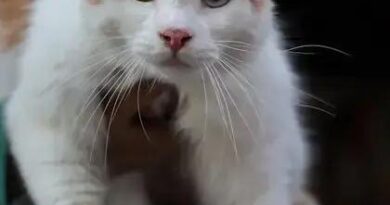What is: Anovulation in dogs
What is Anovulation in Dogs?
Anovulation in dogs refers to the absence of ovulation during the estrous cycle, which can lead to infertility. This condition can affect female dogs of any breed and age, although it is more commonly observed in certain breeds. Understanding anovulation is crucial for dog breeders and pet owners who wish to manage their dog’s reproductive health effectively.
Causes of Anovulation in Dogs
There are several potential causes of anovulation in dogs, including hormonal imbalances, stress, and underlying health issues. Hormonal disorders, such as hypothyroidism or adrenal gland dysfunction, can disrupt the normal hormonal signals required for ovulation. Additionally, factors like extreme stress or changes in the dog’s environment can also interfere with the reproductive cycle.
Symptoms of Anovulation
Identifying anovulation in dogs can be challenging, as the symptoms may not be overt. However, some signs to look for include irregular heat cycles, prolonged estrus without signs of ovulation, and a lack of interest from male dogs during mating season. If a female dog does not exhibit typical behaviors associated with her heat cycle, it may indicate anovulation.
Diagnosis of Anovulation
To diagnose anovulation in dogs, veterinarians typically perform a thorough examination, which may include blood tests to assess hormone levels. These tests can help determine if there is a hormonal imbalance affecting the dog’s reproductive cycle. Additionally, tracking the dog’s heat cycles over time can provide valuable information for diagnosis.
Treatment Options for Anovulation
Treatment for anovulation in dogs depends on the underlying cause. If hormonal imbalances are identified, hormone therapy may be recommended to stimulate ovulation. In some cases, addressing environmental stressors or health issues can also help restore normal reproductive function. It’s essential to work closely with a veterinarian to determine the best course of action.
Impact of Anovulation on Breeding
Anovulation can significantly impact breeding plans for dog owners and breeders. A female dog that does not ovulate will not be able to conceive, which can lead to frustration and disappointment for those looking to breed their pets. Understanding anovulation is vital for making informed decisions about breeding and managing a dog’s reproductive health.
Preventive Measures for Anovulation
While not all cases of anovulation can be prevented, certain measures can help promote reproductive health in female dogs. Maintaining a balanced diet, ensuring regular veterinary check-ups, and minimizing stress can all contribute to a healthier reproductive cycle. Additionally, responsible breeding practices can help reduce the risk of hereditary conditions that may lead to anovulation.
When to Consult a Veterinarian
If you suspect that your dog may be experiencing anovulation, it is essential to consult a veterinarian promptly. Early intervention can help identify any underlying health issues and provide appropriate treatment options. Regular veterinary care is crucial for monitoring your dog’s reproductive health and addressing any concerns that may arise.
Conclusion
Understanding anovulation in dogs is essential for pet owners and breeders alike. By recognizing the signs, causes, and treatment options, you can take proactive steps to ensure your dog’s reproductive health. Regular veterinary visits and a healthy lifestyle can help mitigate the risks associated with anovulation, allowing for a happier and healthier pet.



